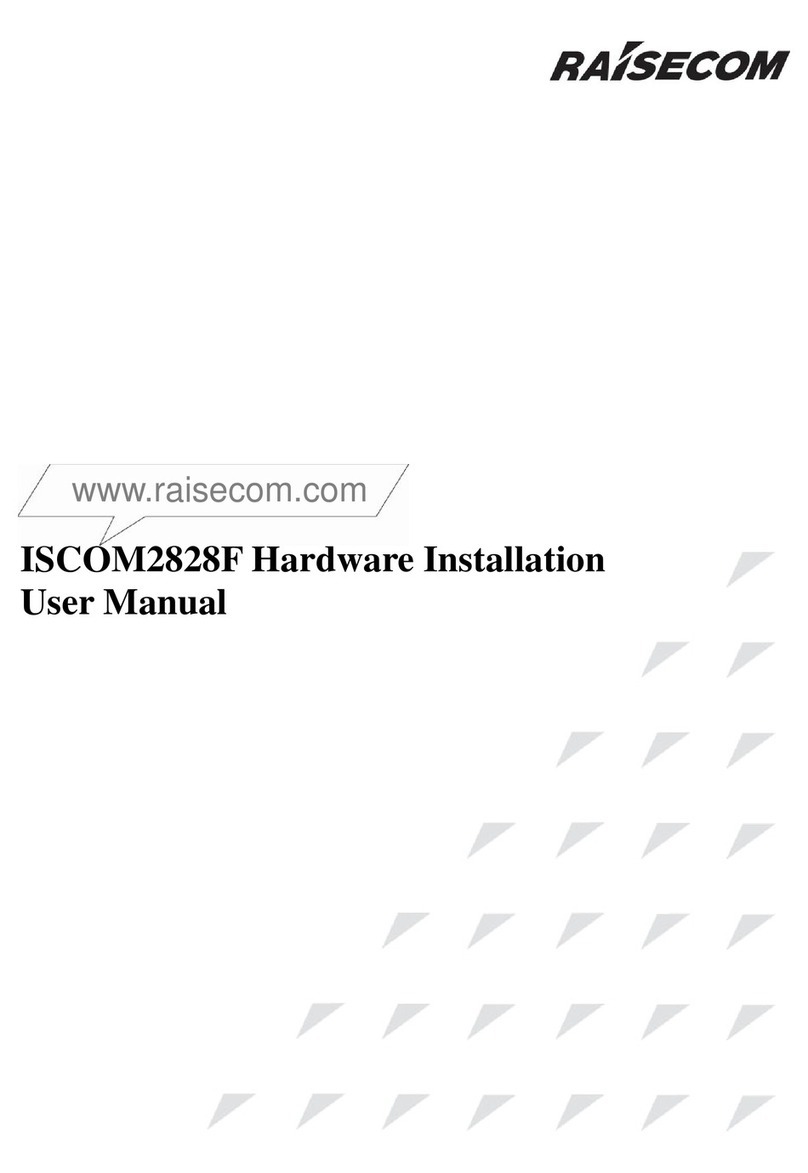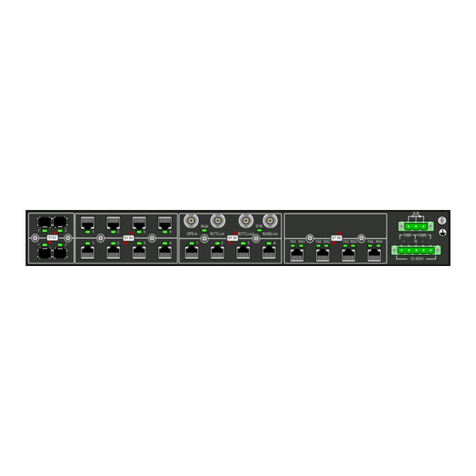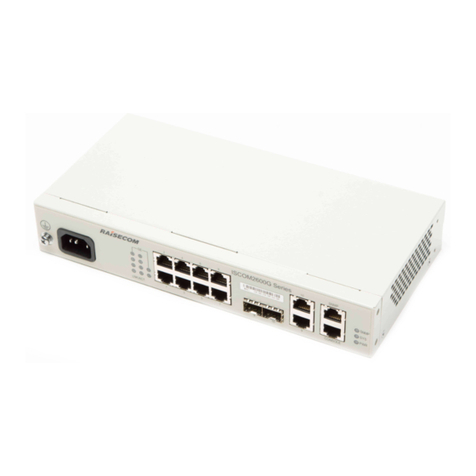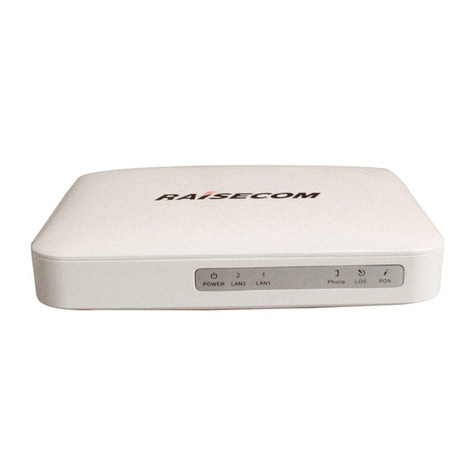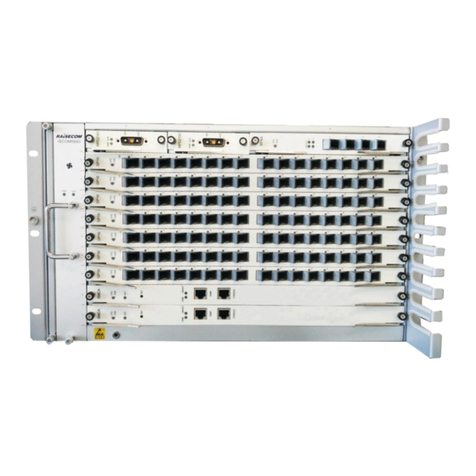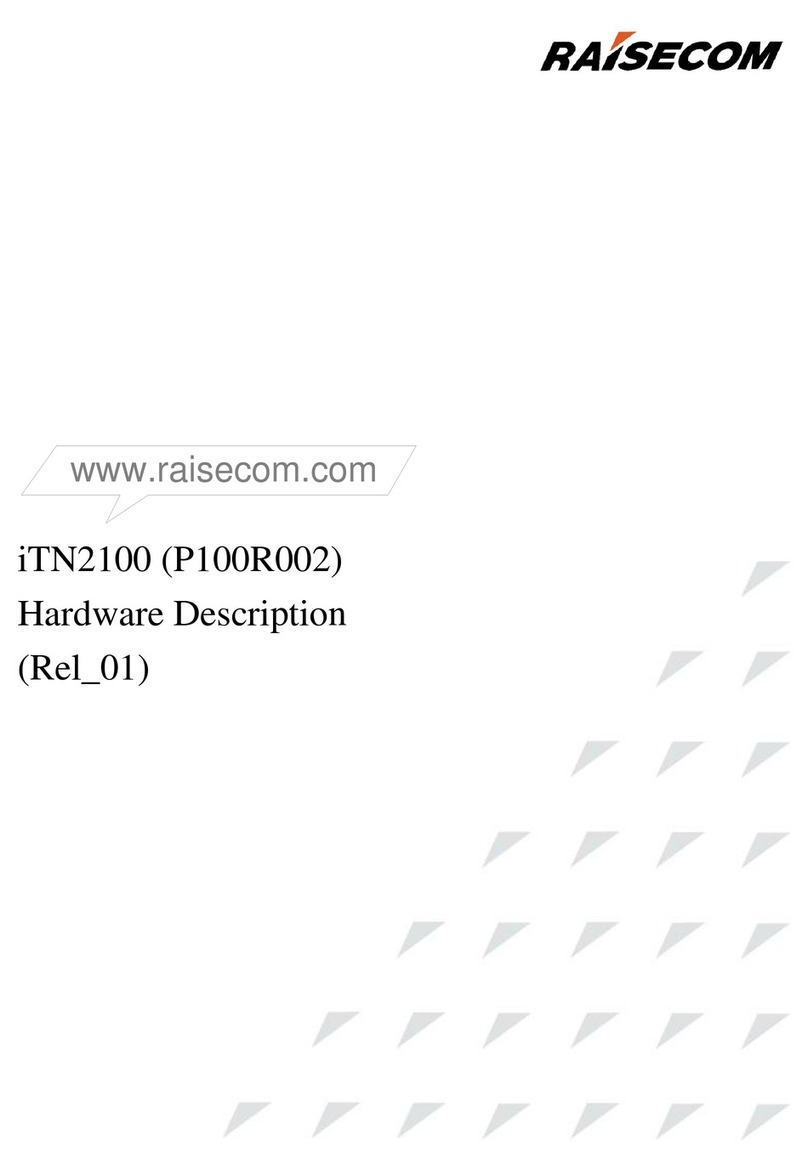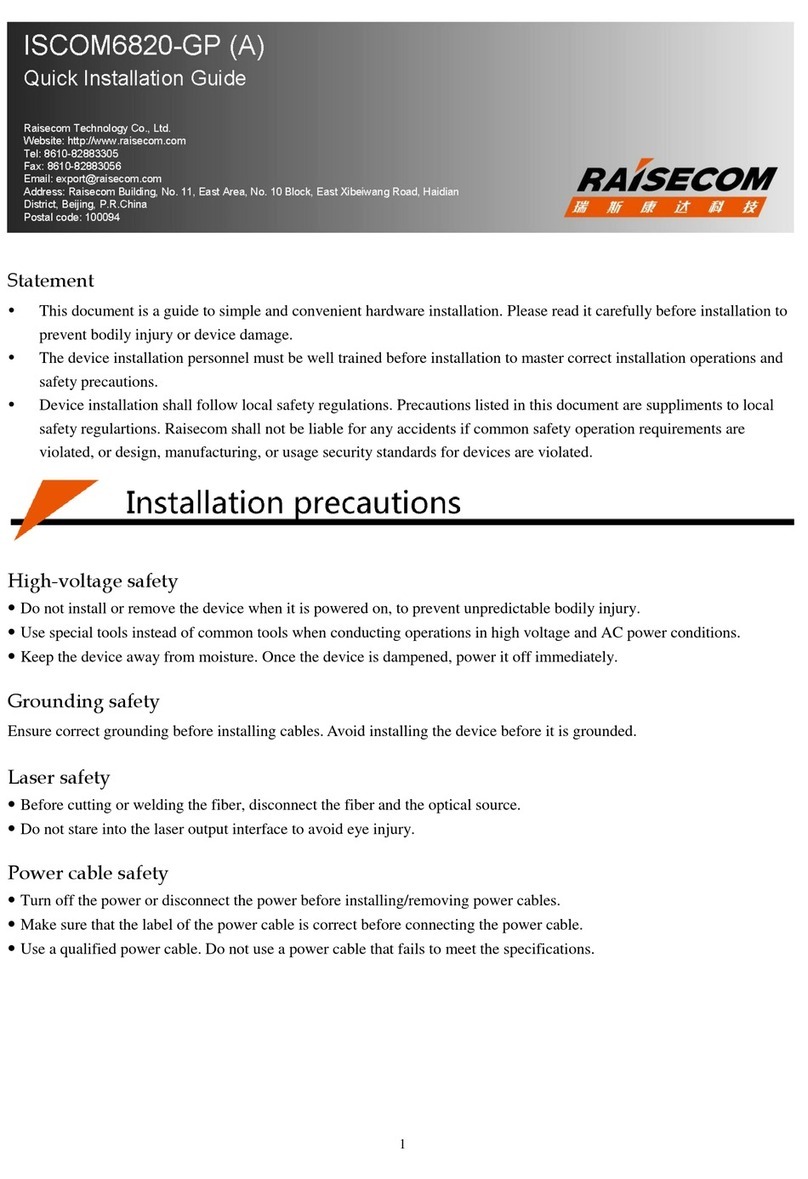
Raisecom
RC1201-2GE16E1T1 Product Description
Raisecom Technology Co., Ltd.
3.4.2 VLAN ...................................................................................................................................................31
3.4.3 QinQ......................................................................................................................................................32
3.4.4 VLAN mapping.....................................................................................................................................33
3.4.5 Loopback detection...............................................................................................................................34
3.5 QoS.................................................................................................................................................................34
3.5.1 Priority trust ..........................................................................................................................................34
3.5.2 Priority mapping ...................................................................................................................................34
3.5.3 Traffic classification..............................................................................................................................35
3.5.4 Traffic policy.........................................................................................................................................37
3.5.5 Queue scheduling..................................................................................................................................38
3.5.6 Rate limiting based on ports and VLANs .............................................................................................39
3.6 Link aggregation ............................................................................................................................................39
3.7 Storm control..................................................................................................................................................40
3.8 Routing...........................................................................................................................................................40
4 Operation, management, and maintenance ...........................................................................41
4.1 Operation and maintenance............................................................................................................................41
4.1.1 Management and operation modes........................................................................................................41
4.1.2 Maintenance and test tools....................................................................................................................42
4.2 NView NNM system......................................................................................................................................43
4.2.1 Introduction to functions.......................................................................................................................43
4.2.2 Features.................................................................................................................................................44
4.3 Ethernet OAM................................................................................................................................................45
5 Technical specifications.............................................................................................................47
5.1 Product specifications ....................................................................................................................................47
5.2 Component specifications ..............................................................................................................................48
5.2.1 Specifications of main control card.......................................................................................................48
5.2.2 Specifications of RC1201-SUB-4GE subcard ......................................................................................48
5.3 Optical interface parameters...........................................................................................................................48
5.4 Laser security class ........................................................................................................................................49
5.5 Reliability specifications................................................................................................................................49
5.6 EMC indexes..................................................................................................................................................50
5.7 Security standards ..........................................................................................................................................50
5.8 Environmental requirements ..........................................................................................................................50
5.8.1 Storage environment .............................................................................................................................50
5.8.2 Tranport environment............................................................................................................................52
5.8.3 Operation environment .........................................................................................................................53
6 Installation....................................................................................................................................57
6.1 Installation location........................................................................................................................................57
6.2 Safety information..........................................................................................................................................57
6.2.1 Safety statement....................................................................................................................................58
6.2.2 Safety symbols......................................................................................................................................58
